How to clean a Beko washing machine
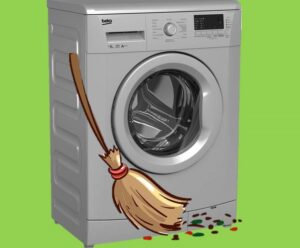 Any household appliance must be carefully looked after so that it lasts not even for years, but for decades. This includes not only proper operation in compliance with all rules and precautions, but also regular cleaning. Cleaning the Beko washing machine must be complete, that is, removing not only visible dirt from the body and parts, but also cleaning the internal components of the “home assistant”, which over time can even fail due to dirt and debris. We will analyze each cleaning stage in order, paying close attention to all key components of the device.
Any household appliance must be carefully looked after so that it lasts not even for years, but for decades. This includes not only proper operation in compliance with all rules and precautions, but also regular cleaning. Cleaning the Beko washing machine must be complete, that is, removing not only visible dirt from the body and parts, but also cleaning the internal components of the “home assistant”, which over time can even fail due to dirt and debris. We will analyze each cleaning stage in order, paying close attention to all key components of the device.
What elements need to be cleaned?
Even if the washing machine regularly comes into contact with water and powerful household chemicals intended for cleaning, the equipment will still become dirty inside and out. At the same time, even household cleaning chemicals negatively affect the internal elements of the Beko washing machine, since limescale remains on the hoses and water heating element, and soap deposits also appear on the dispenser and drum. Plus, the machine regularly gets dirty with lint from clothes, pet hair, and room dust.
Experts advise performing a comprehensive cleaning of your washing machine at least once every six months.
This is why washing equipment gets dirty so actively, both outside and inside. However, the level of contamination varies, so you should pay much closer attention to the drain filter, cuff, pump, powder receptacle and bottom of the tank. Why do they do this?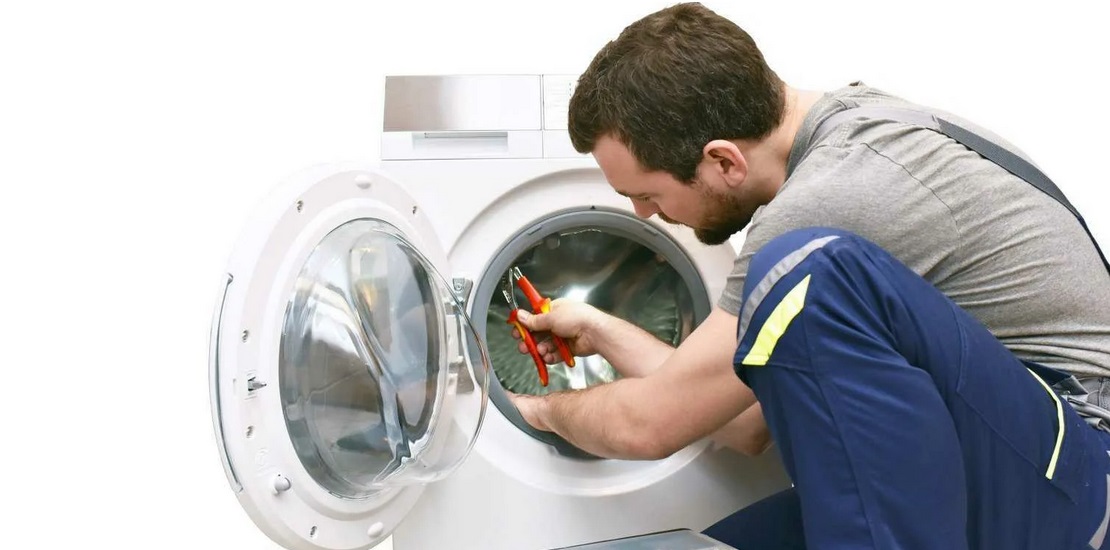
- Drain filter. This element is often called a garbage filter, because it stops about 90% of the various debris that gets into the machine.This list includes foreign objects from clothing, hair, threads, wool and much more. The unit must be cleaned at least twice a year.
- Hatch cuff. The rubber seal consists of several folds, in which various debris, soap, and waste liquid accumulate. Because of this, the cuff must be wiped dry after each working cycle so that it does not become moldy and does not begin to smell unpleasantly and contaminate clothes.
- Pump. In this element, you need to very carefully check the impeller, which collects the remaining 10% of debris after the garbage filter. Often hair, wool, lint and other contaminants block the movement of the blades, which over time can lead to pump failure.
- Powder receiver. Very often, household chemicals remain in the tray, which did not dissolve, but along with dust and deposits were left to dry out. If you do not take care of the receiver, then mold may also form in it, spreading an unpleasant odor.
- Bottom of the tank. Finally, you can clean the bottom of the tank, which sometimes contains drum debris, soap, and waste liquid residue. It is not always easy to remove contaminants from the bottom, but this does not mean that they can be ignored.
This is what the list of elements that are most susceptible to contamination looks like. Forewarned is forearmed, so now you can take on cleaning your washer, moving from the simplest to the most complex. The cleaning process is very simple, so you can handle it yourself, without even calling a repair service specialist.
The main "storage" of dirt
Most Beko brand washing machines have a drain filter hidden in the lower right corner directly behind the rectangular technical hatch.To gain free access to the garbage filter, you just need to pry up the hatch with a screwdriver and press out its plastic latches. Next you need to find the black plug and start cleaning the element according to the instructions.
- Be sure to disconnect the “home assistant” from all communications.
- Tilt the washer body back so that its front legs rise 5-7 centimeters from the floor level.
- Place a large basin or bucket under the drainage filter to collect the remaining water from the last operating cycle.
- Find the emergency drain hose, disconnect it and drain all the liquid into the same container prepared earlier.
This instruction is suitable for washing equipment that has a special drainage sleeve. If your model does not have such a hose, then the instructions will be slightly different, since you will have to unscrew the garbage filter. In this case, the procedure will be as follows: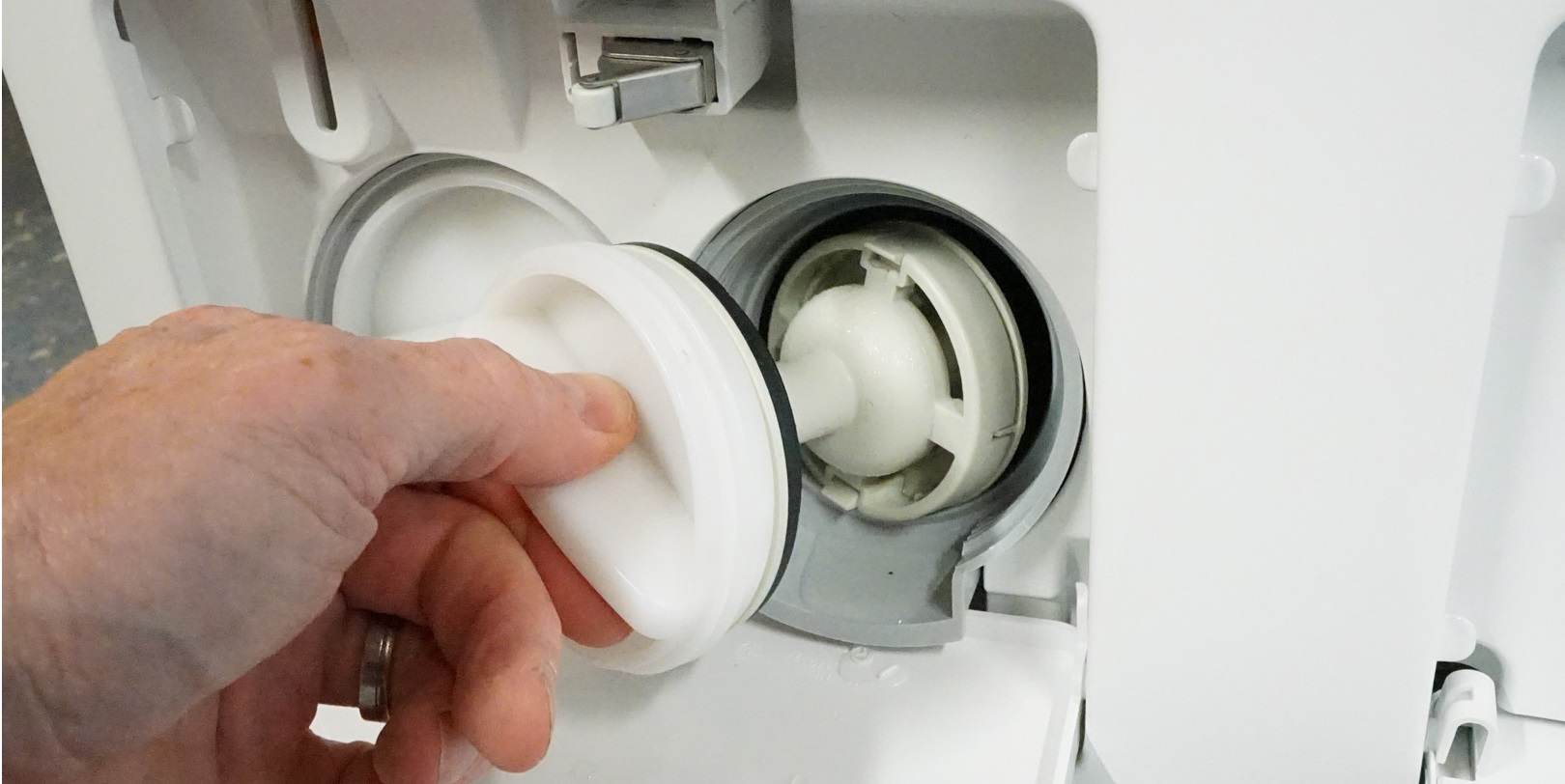
- grab the protrusion on the cork and rotate it from right to left;
- remove the nozzle;
- carefully examine the seat for contamination using a flashlight;
- remove all dirt and debris from there;
- Clean the nozzle itself of any debris that may have stuck to it. This can be done conveniently using a powerful stream of hot water from the tap, or by soaking the element in a solution of citric acid;
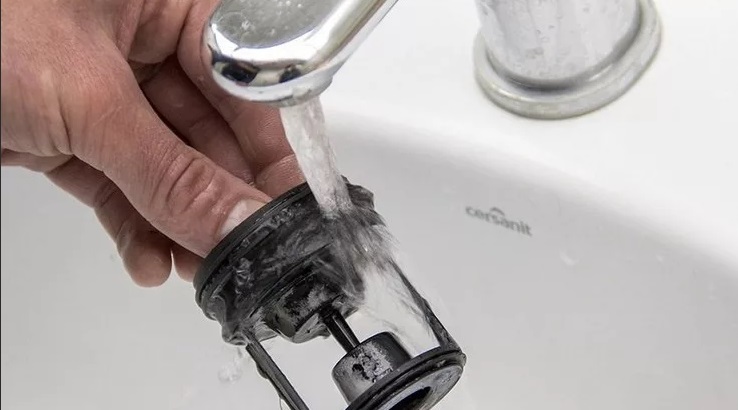
- install the part in its seat;
- close it with the hatch.
Experts recommend cleaning the drainage element at least once every three months if washing is carried out as normal and you do not have pets. If a cat or dog lives in the house, then it is better to clean the filter once a month. Finally, the knot should be cleaned of wool after each woolen garment is washed.
Dirt in the powder drawer
The powder receptacle is considered a rather dirty place in the washing machine. If you do not clean it on time, then powder, gel, conditioner and other household chemicals will seriously stick to the walls of the tray over time. At the same time, the longer you don’t clean the compartment, the more plaque there will be, which can have a bad effect on the clogged pipe, causing water and detergents to leave the dispenser worse, leading to leaks and reducing the overall quality of the streak. To prevent this from happening, you should thoroughly clean the detergent tray after each cycle. This can be done using citric acid, vinegar or baking soda as follows:
- first you need to remove the powder receptacle by carefully grasping it by the handle;
- then pull it towards you until it stops;

- squeeze the small lever in the center of the cuvette to remove the block;
- remove the tray, which is no longer prevented from leaving its seat.
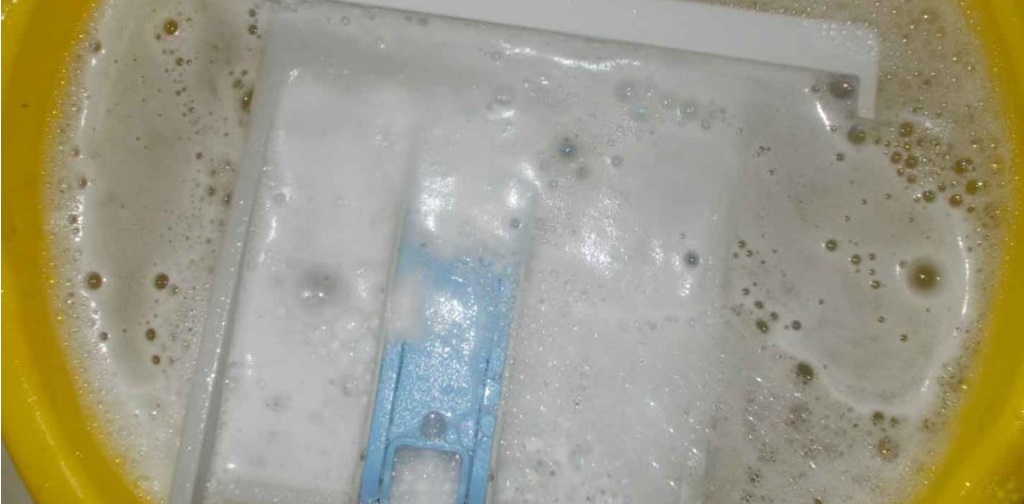
Sometimes you can remove contaminants using strong pressure from the tap. But if the tray has not been washed for a long time, you will first have to soak it in a solution of the mentioned cleaning elements for several hours. After this, you need to carefully treat the surfaces with a sponge or an old toothbrush to remove all plaque, and then rinse the tray and dry it thoroughly. Then all that remains is to return the powder receptacle to its place by installing it in the hole and pushing it all the way.
The cuff also gets dirty
Close attention must also be paid to the rubber seal of the washing machine, because a lot of debris accumulates in its lower folds, starting with hair and fur, ending with soap deposits and waste liquid.It is better not to leave all this in the cuff, because high humidity without air conditioning will cause mold and an unpleasant odor to appear inside the machine very quickly, which will not be easy to remove. How to deal with these consequences? It is better to independently remove all excess from the lower folds of the cuff after each working cycle. It is also worth cleaning the gum thoroughly from time to time.
- Open the washer hopper door.
- Apply white to each fold of the rubber seal.
- Close the door.
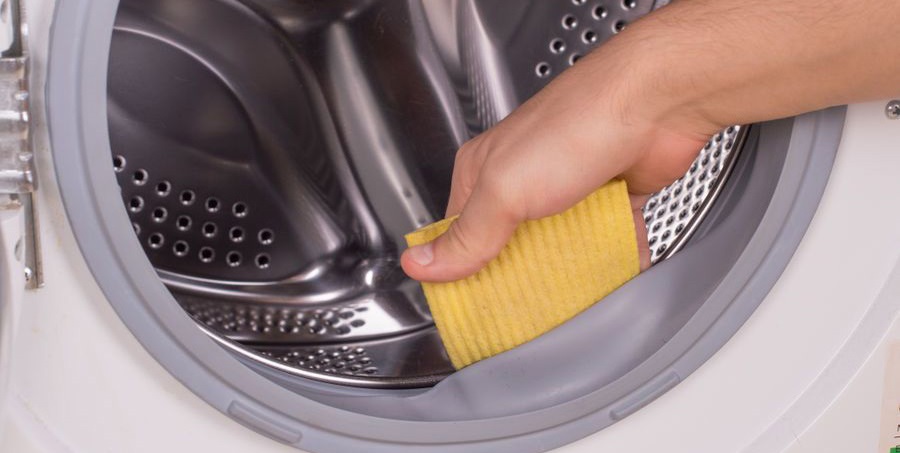
- Wait about an hour.
- Rinse the cuff yourself, or activate the idle working cycle with a minimum duration.
- Be sure to wipe the rubber band dry.
It is not necessary to use white, because a solution of citric acid or soda will also work perfectly. The most important thing is not to use caustic acids, which can damage the rubber element. When working with cleaning solutions, be sure to wear protective gloves and goggles to prevent harmful chemicals from getting on your skin or eyes.
Pump impeller blocked by dirt
Let's move on to more difficult points. It is not easy to provide free access to the pump impeller, but this must be done so that the “home assistant” serves for a long time. First, you need to disconnect household appliances from all communications and move them away from the wall, or remove them from the kitchen unit if we are talking about built-in appliances. Then follow our guide exactly.
- Remove the detergent drawer.
- Unscrew the two screws hidden behind the powder receptacle.
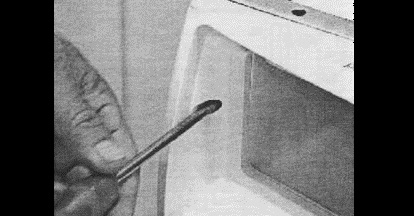
- Loosen the bolts around the perimeter of the dashboard.
- Disconnect the board from the case without separating the wires from it, but simply placing it on top of the washer.

- Pry up and remove the technical hatch door.

- Remove the outer clamp from the rubber seal and carefully tuck it inside the drum.
Do not remove the cuff completely, as it is very difficult to install it in place without experience.
- Disable the sunroof locking device.
- Remove the front panel from the Beko washing machine.
- Drain off any waste liquid that may remain from the last wash.
All that remains is to find the drain pump installed below. Unscrew the fasteners that hold it, disconnect the wiring and carefully rock the element, remove it from the household appliance. Now you can carefully examine the impeller for contamination. Remove hair, fur, foreign objects and other debris that has accumulated in it during the period of active use of the device. Be sure to clean the dirt from the surface of the drainage, as well as near the volute, plus, wash the internal parts of the pump after disassembling it.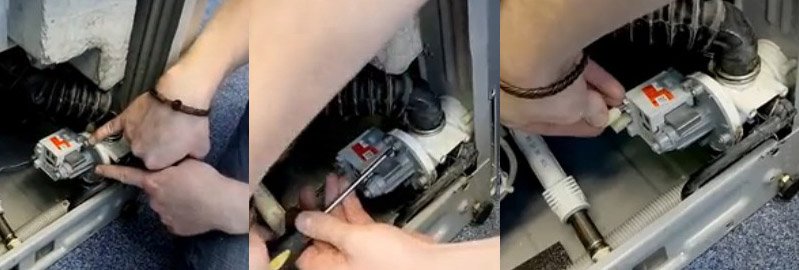
When the pump is cleaned of dirt, assemble it, install it in its seat and assemble the washing machine according to our instructions in the reverse order. If the impeller is damaged, for example, a blade is broken, it dangles or falls off the shaft, then you should not try to restore it with sealant or glue. In such a situation, only complete replacement of the element is permissible.
Bottom of the main tank
Finally, all that remains is to figure out how to clean the bottom of the tank. There is no need to perform this action once every six months, since this procedure is only needed in an emergency situation, for example, if you need to replace a bearing or if a foreign object is stuck in the unit.
If you really need to clean the bottom of the main tank, then there is a long job of removing the heating element and then cleaning the bottom through the hole that appears.This should be done as follows:
- disconnect the Beko washing machine from the power supply and water supply;
- drain the waste water;
- provide free access to the machine by moving it away from the wall or pulling it out of the kitchen unit;
- remove the back panel;
- Disconnect all wiring from the water heating element.
Just in case, take a photo of connecting the wires to the heating element so that you have an example at hand for reassembly.
- remove the thermistor;
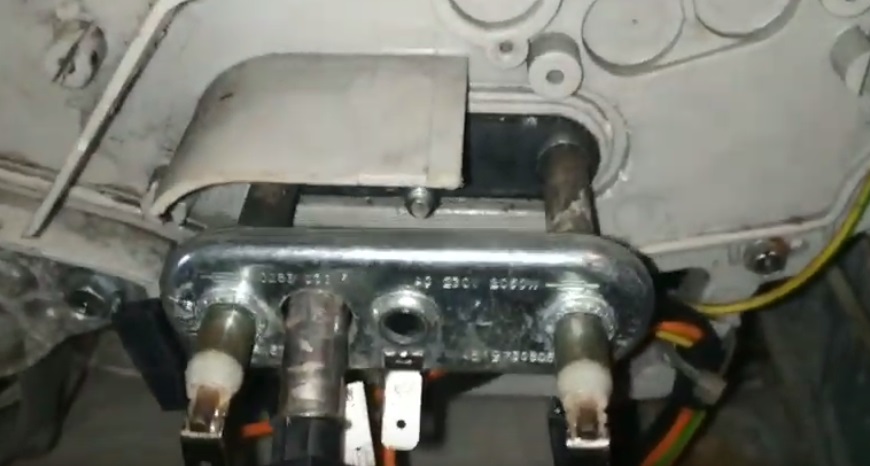
- remove the central nut securing the element;
- push the bolt in;
- Carefully remove the heater.
This will provide you with an opening through which you can stick your hand to clear the bottom of the main reservoir of dirt and foreign objects.
Interesting:
Reader comments
- Share your opinion - leave a comment


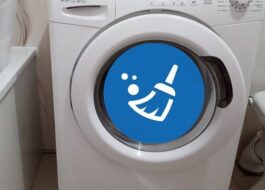

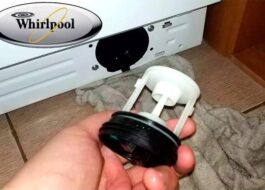

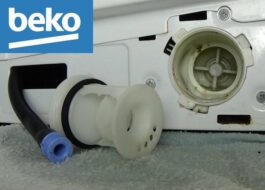














Add a comment